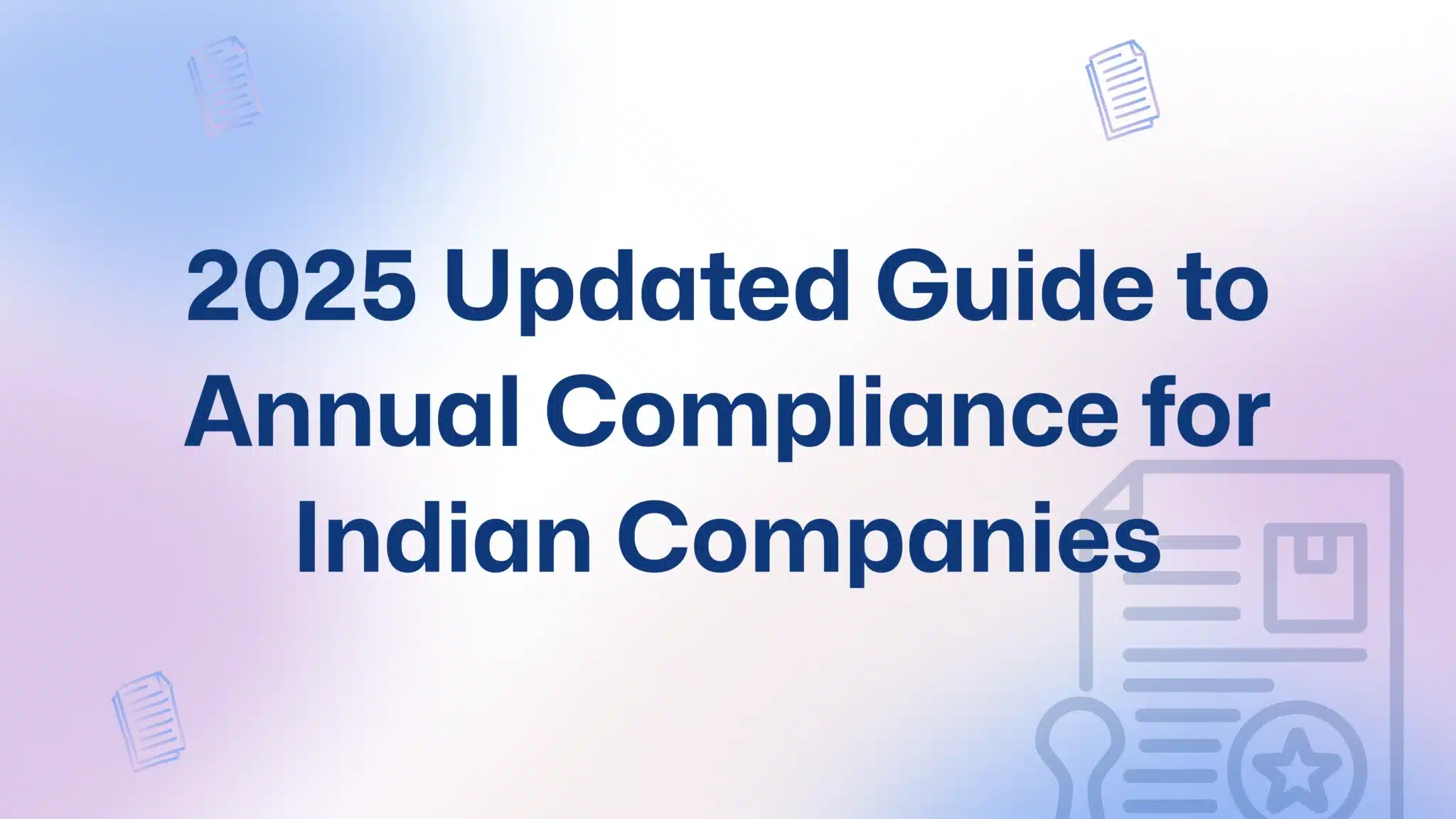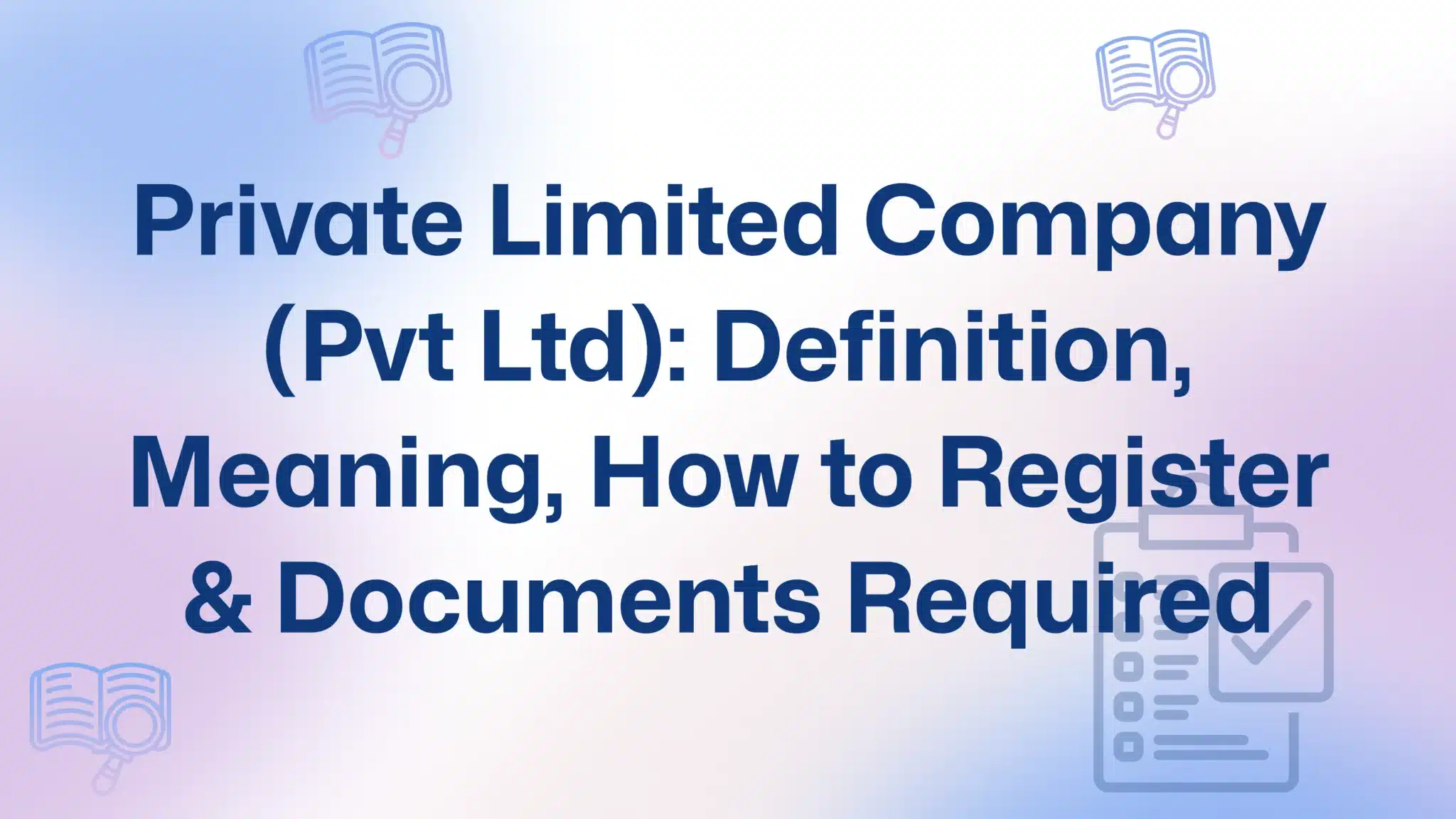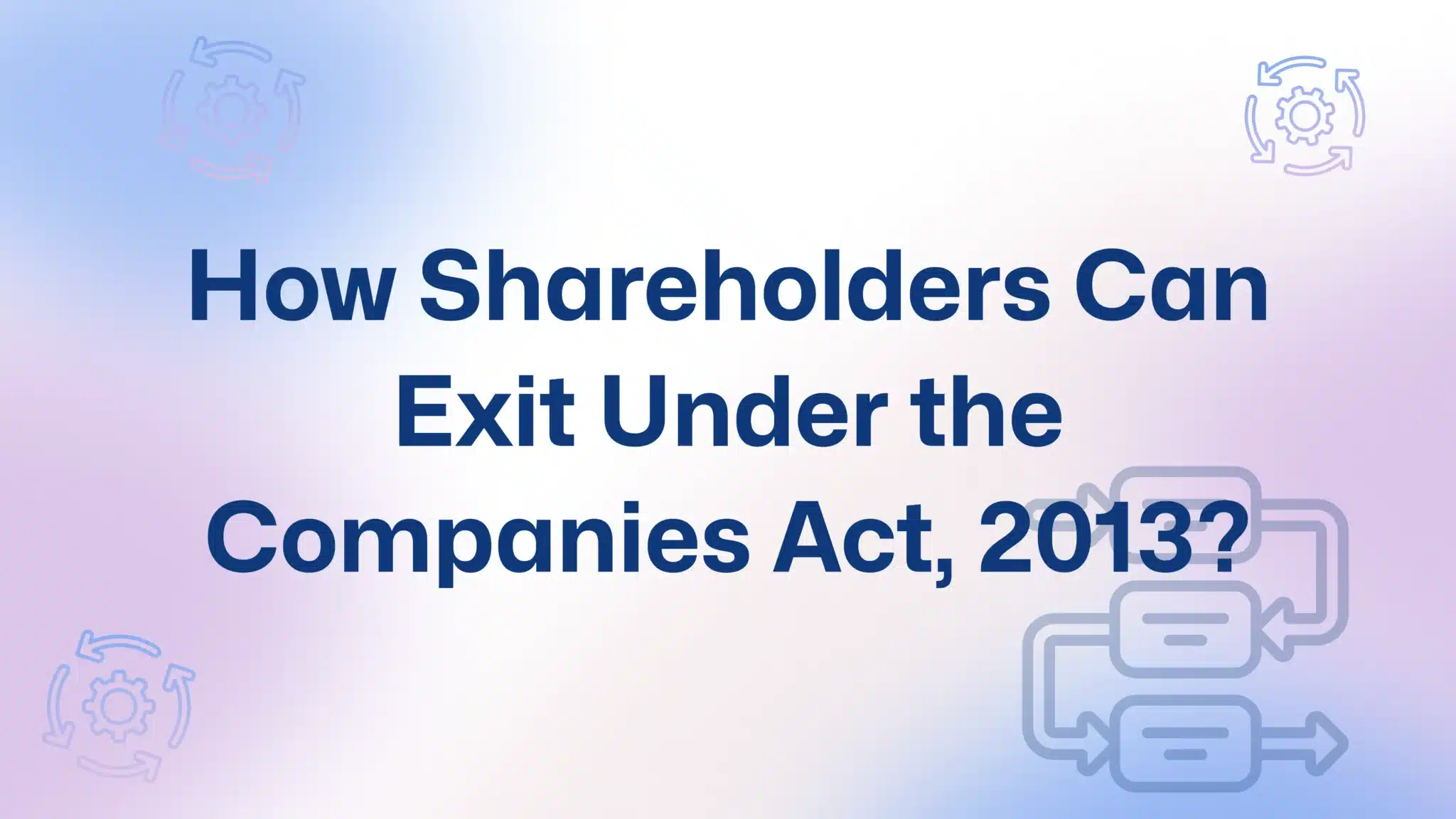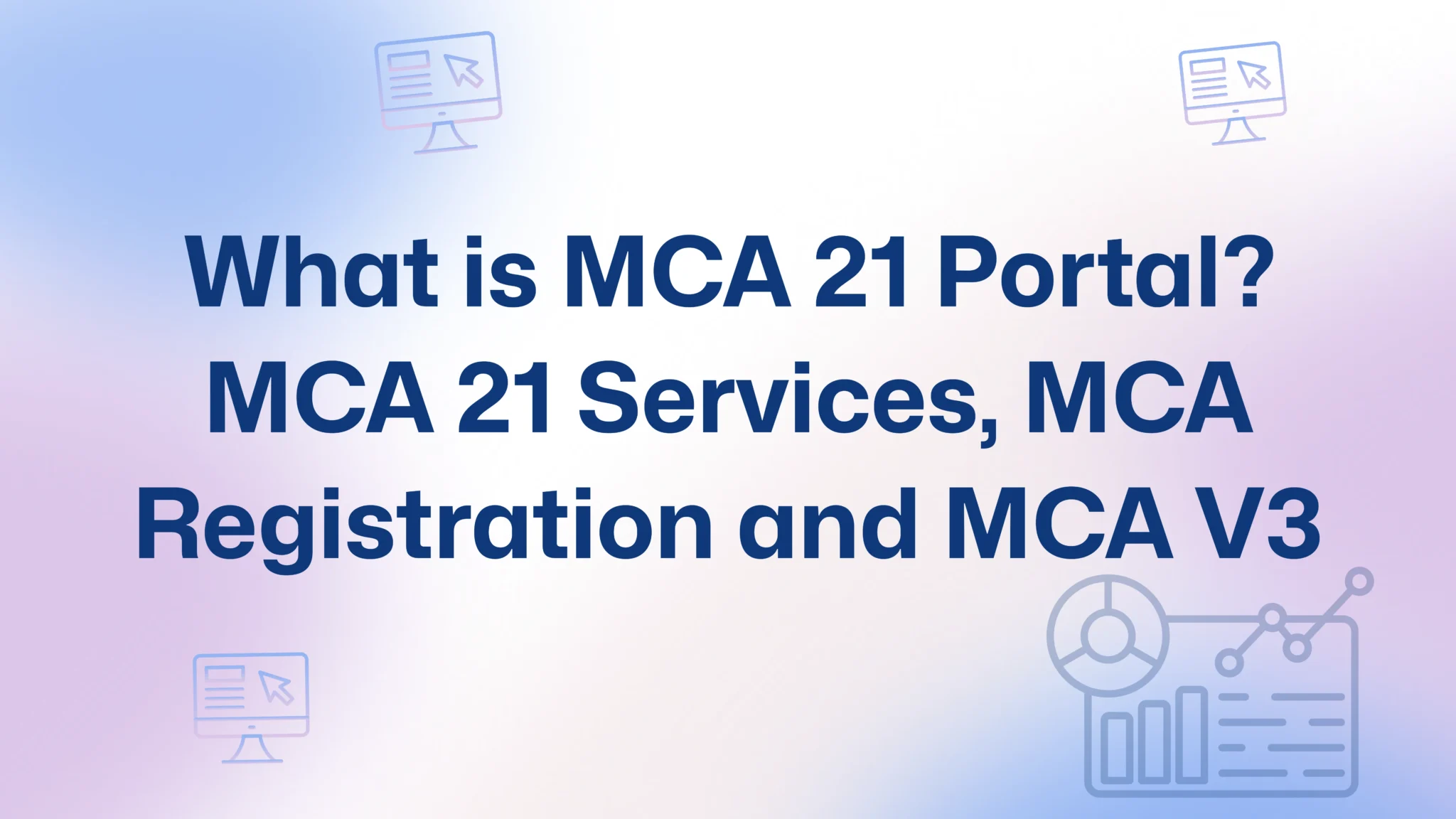When you first went for One Person Company Registration, it was the right choice fast, simple, and perfect for solo founders. You had complete control and fewer compliance headaches. But as your business grows, that single-founder model can start to feel limiting.
You might be thinking about raising capital, bringing in partners, or taking on larger clients. That’s when converting your One Person Company (OPC) into a Private Limited Company becomes the right step. It allows to expand, adds credibility of investors, and prepares your business for long-term growth.
This blog includes:
- Understanding OPC and Private Limited Company
- Why Convert an OPC to a Private Limited Company
- Prerequisites for OPC to Private Limited Conversion
- Legal Provisions and 2021 Amendments
- Differences Between OPC and Private Limited Company
- Step-by-Step Conversion Process
- Post-Conversion Compliance
- Advantages of Converting OPC to a Private Limited Company
- Frequently Asked Questions (FAQs)
- How FinGuru India Can Assist
Understanding OPC and Private Limited Company
An OPC (One Person Company) is for solo entrepreneurs who want to run a business with limited liability and a formal legal setup without needing a partner. It allows one person to have complete ownership and control while keeping personal and business liabilities separate. It’s simple to manage, has fewer compliance requirements, and is great for early-stage ventures.
Private Limited Company is built for growth. It needs at least two shareholders and two directors and provides a solid framework for raising funds, sharing ownership, and expanding operations. This type of company is often chosen by startups and growing businesses that aim to attract investors, build credibility, and scale efficiently.
Why Convert OPC to a Private Limited Company?
An OPC is ideal choice for just starting out. But it comes with limits: of adding the shareholders, not able to raise the equity investment, and for expansion and decision-making.
- More members and directors minimum two, which helps in sharing responsibilities.
- Access to funding banks, venture capitalists, and angel investors prefer Private Limited Companies.
- Enhanced credibility your business looks more established and trustworthy.
- Wider opportunities you can expand operations or scale without structural barriers.
- Legal stability ownership changes don’t affect company existence.
Prerequisites for OPC to Private Limited Conversion
Before filing anything with the Registrar of Companies (ROC), make sure you’re ready on these fronts.
- Add at least one more director and shareholder: A Private Limited Company must have at least two directors and two shareholders. Identify who will join as the second member and get their consent in writing.
- Ensure all compliance is up to date: File all pending annual returns, audits, and financial statements before applying. Any delay here can hold up your conversion.
- Revise the Memorandum and Articles of Association (MOA & AOA): These are your company’s foundation documents. Update them to reflect Private Limited norms including transfer restrictions and share capital clauses.
- Obtain consents and declarations
Get a No Objection Certificate (NOC) from creditors.
Obtain written consent from the nominee and all new directors or shareholders. - Prepare digital credentials: Every director needs a valid Director Identification Number (DIN) and Digital Signature Certificate (DSC).
Once these are ready, you can move confidently into the legal conversion process.
Legal Provisions and Requirements
The conversion process is backed by Section 18 of the Companies Act, 2013, which allows any registered company including an OPC to change its type by altering its Memorandum and Articles of Association.
The detailed steps are covered under Rule 6 of the Companies (Incorporation) Rules, 2014, later simplified by the Companies (Incorporation) Second Amendment Rules, 2021.
What changed with the 2021 amendments
- No more 2-year waiting rule OPCs can convert voluntarily anytime.
- No capital or turnover thresholds earlier, conversion was mandatory if capital exceeded ₹50 lakh or turnover crossed ₹2 crore; that’s gone.
- Simplified form filing you only need Form INC-6; Form INC-5 has been scrapped.
Key Differences Between OPC and Private Limited Company
| Aspect | One Person Company (OPC) | Private Limited Company (Pvt Ltd) |
| Ownership | Single owner | Minimum two shareholders |
| Directors | Minimum one director | Minimum two directors |
| Decision Making | Complete control with one person | Shared decision-making among directors |
| Compliance | Fewer filings and simpler structure | More formalities, board meetings, and annual filings |
| Funding Options | Limited; investors avoid OPCs | Preferred by banks, VCs, and angel investors |
| Credibility | Suitable for small businesses | More trusted and recognized in the market |
| Growth Potential | Limited expansion scope | Ideal for scaling and partnerships |
| Nominee Requirement | Mandatory to appoint a nominee | Not required |
| Legal Status | Separate legal entity with | Separate legal entity with broader |
Step-by-Step Process for Converting OPC to Private Limited
Let’s go through the process step by step, as explained in detail:
Step 1: Hold a Board Meeting
Even if your OPC has just one director, you must formally record a board resolution.
The agenda usually includes:
- Approval for conversion into a Private Limited Company.
- Drafting and adopting new MOA and AOA.
- Appointment of additional directors or members.
- Authorization for a professional (CA/CS) to handle ROC filings.
Step 2: Obtain Shareholder Approval
The sole shareholder must pass a special resolution approving:
- The conversion of the OPC.
- Alteration of the MOA and AOA.
- Appointment of additional directors.
Step 3: File Form MGT-14
In 30 days of special resolution, file Form MGT-14 with the Registrar of Companies.
Attach:
- Certified copy of the resolution.
- Altered MOA and AOA.
- Notice of the meeting and its explanatory statement.
Step 4: File Form INC-6 (Application for Conversion)
This is the official application for conversion. Attach:
- Altered MOA and AOA.
- List of all members and directors with their consent letters.
- NOC from creditors.
- Latest audited financial statements.
- Copy of the existing Certificate of Incorporation.
- Proofs of identity and address for all new directors and members.
Submit the form along with the prescribed ROC fee.
Step 5: ROC Review and Issuance of Certificate
The ROC verifies the documents and, if satisfied, issues a fresh Certificate of Incorporation.
From that date, your OPC officially becomes a Private Limited Company. The entity continues with the same registration number only its legal classification changes.
Step 6: Post-Conversion Formalities
Once you receive the new certificate:
- Update your company name everywhere (bank, PAN, GST, contracts, website).
- Revise business stationery, invoices, and signage.
- Inform relevant authorities, clients, and suppliers.
- Maintain new statutory registers (of members, directors, and shares).
Post-Conversion Compliance
A Private Limited Company comes with more structure and responsibilities.
After conversion, make sure you comply with these:
- Hold quarterly board meetings and record minutes properly.
- File annual returns (Form MGT-7/7A) and financial statements (Form AOC-4) each year.
- Maintain updated registers members, directors, charges, and contracts.
- Conduct annual general meetings (AGMs).
- Keep tax and GST registrations aligned with your new company type.
Advantages of Converting OPC to Private Limited Company
- Easier fundraising: Investors, banks, and venture capitalists prefer Private Limited Companies because they offer better structure.
- More directors and shareholders: Allows teamwork and shared responsibility.
- Better reputation: Clients and lenders often trust Private Limited firms more.
- Flexibility for expansion: There are no fixed limits on ownership or capital, giving the flexibility to grow and bring in new partners or investors.
- Perpetual succession: The company continues to exist regardless of changes in directors or shareholders. It’s not dependent on any one individual.
- Wider growth potential: Easier to scale operations nationally or globally.
Conclusion
Converting a One Person Company into a Private Limited Company is more than just a legal formality, it’s a significant milestone. It represents your business’s evolution from a single-founder venture into a structured and scalable enterprise.
With the recent amendments simplifying the process, you can make the move without worrying about turnover thresholds or waiting periods. Once converted, you’ll enjoy easier access to funding, more flexibility, and greater trust in the market.
If you’ve outgrown your OPC setup, it’s time to take the next leap.
Book Your Expert Consultation Today
Call: +91-9999127022
Visit: www.finguruindia.com













